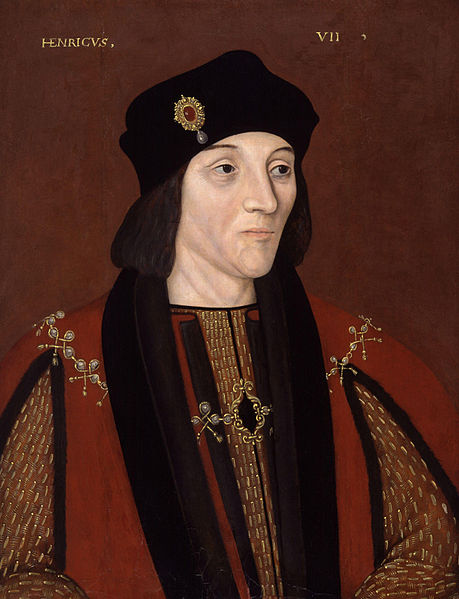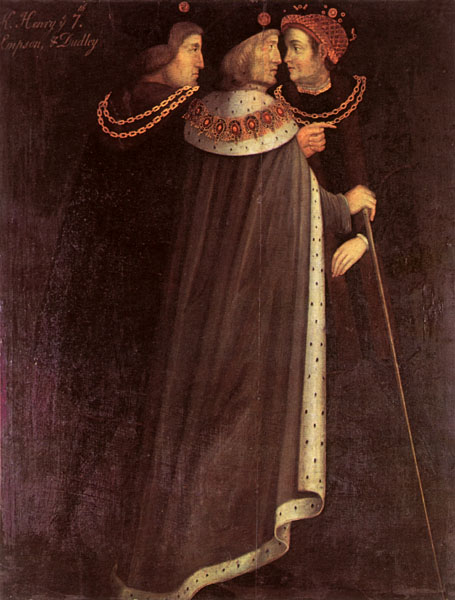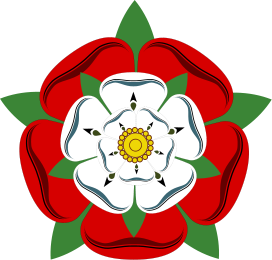<Back to Index>
- Mathematician Ludolph van Ceulen, 1540
- Painter Ernest William Christmas, 1863
- King of England Henry VII, 1457
PAGE SPONSOR
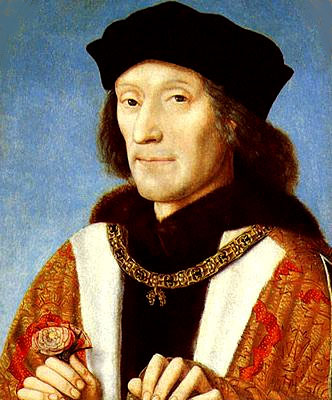
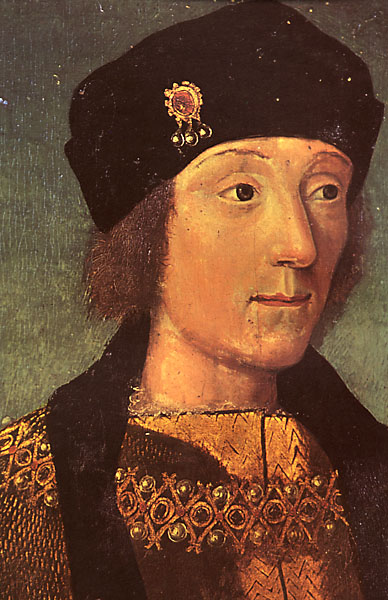
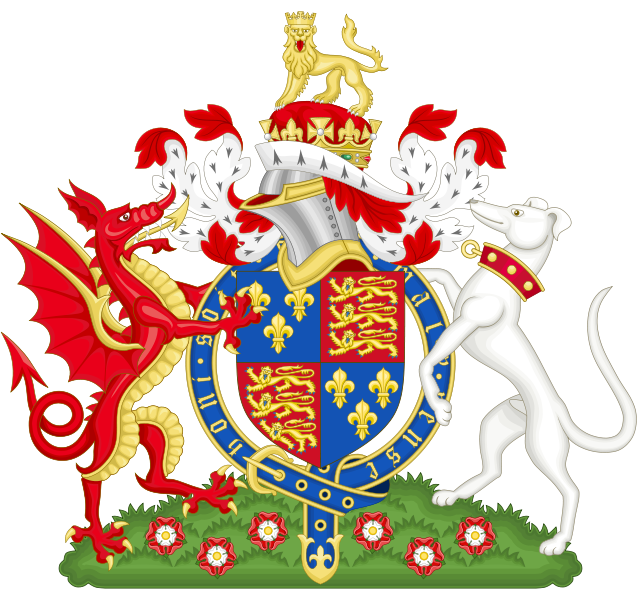
Henry VII (Welsh: Harri Tudur; 28 January 1457 – 21 April 1509) was King of England and Lord of Ireland from his seizing the crown on 22 August 1485 until his death on 21 April 1509, as the first monarch of the House of Tudor.
Henry won the throne when he defeated Richard III at the Battle of Bosworth Field. He was the last king of England to win his throne on the field of battle. He was successful in restoring the power and stability of the English monarchy after the political upheavals of the Wars of the Roses. He founded a long lasting dynasty and was peacefully succeeded by his son, Henry VIII, after a reign of 23 years. Although Henry can be credited with the restoration of political stability in England, and a number of commendable administrative, economic and diplomatic initiatives, the latter part of his reign was characterised by a financial rapacity which stretched the bounds of legality. According to the contemporary historian Polydore Vergil, simple "greed" in large part underscored the means by which royal control was over - asserted in Henry's final years.
Henry VII was born at Pembroke Castle in the west of Wales on 28 January 1457. His father was Edmund Tudor, 1st Earl of Richmond and his mother was Lady Margaret Beaufort. Henry's paternal grandfather, Owen Tudor, originally from the Isle of Anglesey in Wales, had been a page in the court of Henry V. He rose to become one of the "Squires to the Body to the King" after military service at Agincourt. Owen is said to have secretly married the widow of Henry V, Catherine of Valois. One of their sons was Edmund Tudor, father of Henry VII. Edmund was created Earl of Richmond in 1452, and "formally declared legitimate by Parliament".
Henry's claim to the throne, however, derived from his mother through the House of Beaufort. Henry's mother, Lady Margaret Beaufort, was a great - granddaughter of John of Gaunt, Duke of Lancaster, third son of Edward III, and his third wife Katherine Swynford. Katherine was Gaunt's mistress for about 25 years; when they married in
1396, they already had four children, including Henry's great - grandfather John Beaufort. Thus Henry's claim was somewhat tenuous: it was from a woman, and by illegitimate descent. In theory, the descendants of Catherine of Lancaster, the daughter of John of Gaunt and his second wife, Constance of Castile had a better claim. Gaunt's nephew, Richard II, legitimized Gaunt's children by Katherine Swynford by Letters Patent in 1397. In 1407, Henry IV,
who was Gaunt's son by his first wife, issued new Letters Patent
confirming the legitimacy of his half - siblings, but also declaring them
ineligible for the throne. Henry IV's action was of doubtful legality, as the Beauforts were previously legitimized by an Act of Parliament, but it further weakened Henry's claim. Nonetheless, by 1483 Henry was the senior male Lancastrian claimant remaining, after the deaths in battle or by murder or execution of Henry VI, his son Edward of Westminster, Prince of Wales and the other Beaufort line of descent through Lady Margaret's uncle, the 2nd Duke of Somerset. Henry
also made some political capital out of his Welsh ancestry; for
instance, in attracting military support and safeguarding his army's passage through Wales on its way to the Battle of Bosworth. He came from an old established Anglesey family which claimed descent from Cadwaladr (in legend, the last ancient British king) and on occasion, Henry displayed the red dragon of Cadwaladr. He took it, as well as the standard of St George, on his procession through London after victory at Bosworth. A contemporary writer and Henry's biographer, Bernard André, also made much of Henry's Welsh descent. In
reality, however, his hereditary connections to Welsh aristocracy were
not strong. He was descended by the paternal line, through several
generations, to Ednyfed Fychan, the seneschal (steward) of Gwynedd and through this seneschal's wife to Rhys ap Tewdwr, the King of Deheubarth in South Wales. His more immediate ancestor Tudur ap Goronwy had aristocratic land rights but his sons, who were first cousins to Owain Glyndwr, sided with Owain in his revolt. One son was executed and the family
land was forfeited. Another son, Henry's great grandfather, became a
butler to the Bishop of Bangor. Owen
Tudor, the son of the butler, like the children of other rebels, was
provided for by Henry V, a circumstance which precipitated his access
to Queen Catherine of Valois. Notwithstanding this lineage, to the bards of Wales, Henry was a candidate for Y Mab Darogan - 'The son of Prophesy' who would free the Welsh from oppression. In 1456, his father, Edmund Tudor, was captured while fighting for Henry VI in South Wales against the Yorkists. He died in Carmarthen Castle, three months before Henry was born. Henry's uncle, Jasper Tudor,
the Earl of Pembroke and Edmund's younger brother, undertook to protect
the young widow, who was 13 years old when she gave birth to Henry. When Edward IV became King in 1461, Jasper Tudor went into exile abroad. Pembroke Castle, and later the Earldom of Pembroke, were granted to the Yorkist William Herbert, who also assumed the guardianship of Margaret Beaufort and the young Henry. Henry lived in the Herbert household till 1469, when Warwick, the 'Kingmaker', went over to the Lancastrians. Herbert was captured fighting for the Yorkists and executed by Warwick. When Warwick restored Henry VI in 1470, Jasper Tudor returned from exile and brought Henry to court. When the Yorkist Edward IV regained the throne in 1471, Henry fled with other Lancastrians to Brittany, where he spent most of the next 14 years. By 1483, his mother, despite being married to a Yorkist (Lord Stanley), was actively promoting Henry as an alternative to Richard III. At Rennes Cathedral on Christmas Day 1483, Henry pledged to marry Edward IV's eldest daughter, Elizabeth of York, who was also Edward's heir since the presumed death of her brothers, the Princes in the Tower. Henry then received the homage of his supporters. With money and supplies borrowed from his host Francis II, Duke of Brittany, Henry tried to land in England, but his conspiracy unravelled, resulting in the execution of his primary co-conspirator, the Duke of Buckingham. Now supported by Francis II's prime minister Pierre Landais, Richard III attempted to extradite Henry from Brittany, but Henry escaped to France. He was welcomed by the French, who readily supplied him with troops and equipment for a second invasion. Having
gained the support of the Woodvilles, in-laws of the late Edward IV, he
sailed with a small French and Scottish force. Henry landed in Mill
Bay, Pembrokeshire, close to his birthplace. He marched towards England
accompanied by his uncle Jasper and the Earl of Oxford.
Wales was traditionally a Lancastrian stronghold, and Henry owed the
support he gathered to his Welsh birth and ancestry, being directly
descended, through his father, from Rhys ap Gruffydd. He amassed an army of around 5,000 soldiers. Henry
was aware that his best chance to seize the throne was to engage
Richard quickly and defeat him immediately, as Richard had
reinforcements in Nottingham and Leicester. Richard only needed to
avoid being killed in order to keep his throne. Though outnumbered,
Henry's Lancastrian forces decisively defeated Richard's Yorkist army
at the Battle of Bosworth Field on 22 August 1485. Several of Richard's key allies, such as the Earl of Northumberland and William and Thomas Stanley,
crucially switched sides or left the battlefield. Richard III's death
at Bosworth Field effectively ended the Wars of the Roses, although it
was not the last battle Henry had to fight. The
first concern Henry had was to secure his hold on the throne. His claim
to the throne was that he was the last reasonably legitimate male
descendant of Edward III. He honoured his pledge of December 1483 to marry Elizabeth of York. They were third cousins, as both were great - great - grandchildren of John of Gaunt. The marriage took place on 18 January 1486 at Westminster.
The marriage unified the warring houses and gave his children a strong
claim to the throne. The unification of the houses of York and
Lancaster by this marriage is symbolized by the heraldic emblem of the Tudor rose,
a combination of the white rose of York and the red rose of Lancaster.
It also ended future discussion as to whether the descendants of the
fourth son of Edward III, Edmund, Duke of York, through marriage to Phillipa, heiress of the second son, Lionel, Duke of Clarence, had a superior or inferior claim to those of the third son John of Gaunt, who had held the throne for three generations. In addition, Henry had Parliament repeal Titulus Regius,
the statute that declared Edward IV's marriage as invalid and his
children illegitimate, thus legitimizing his wife. Amateur historians Bertram Fields and Sir Clements Markham have claimed that he may have been involved in the murder of the Princes in the Tower, as the repeal of Titulus Regius gave the Princes a stronger claim to the throne than his own. Alison Weir,
however, points out that the Rennes ceremony, two years earlier, was
possible only if Henry and his supporters were certain that the Princes
were already dead. Henry's
second action was to declare himself king retroactively from the day
before Bosworth Field. This meant that anyone who had fought for
Richard against him would be guilty of treason.
Thus, Henry could legally confiscate the lands and property of Richard
III while restoring his own. However, he spared Richard's nephew and
designated heir, the Earl of Lincoln. He also created Margaret Plantagenet, a Yorkist heiress, Countess of Salisbury sui
juris. He took great care not to address the baronage, or summon
Parliament, until after his coronation. At the same time, he almost
immediately afterwards issued an edict that any gentleman who swore
fealty to him would, notwithstanding any previous attainder, be secure
in his property and person. Henry
secured his crown principally by dividing and undermining the power of
the nobility, especially through the aggressive use of bonds and
recognisances to secure loyalty. He also enacted laws against livery and maintenance,
the great lords' practice of having large numbers of "retainers" who
wore their lord's badge or uniform and formed a potential private army. Henry was threatened by several rebellions in the next few years. The first was the Stafford and Lovell Rebellion of 1486, which collapsed without fighting. In 1487, Yorkists led by Lincoln rebelled in support of Lambert Simnel, a boy who was claimed to be the Earl of Warwick, son of Edward IV's brother Clarence (who was actually a prisoner in the Tower). The rebellion was defeated and Lincoln killed at the Battle of Stoke. Henry made the boy Simnel a servant in the royal kitchen. In 1490, a young Fleming, Perkin Warbeck, appeared and claimed to be Richard, the younger of the "Princes in the Tower". Warbeck won the support of Edward IV's sister Margaret of Burgundy. He led attempted invasions of Ireland in 1491 and England in 1495, and persuaded James IV of Scotland to invade England in 1496. In 1497 Warbeck landed in Cornwall with a few thousand troops, but was soon captured and executed. In 1499, Henry had the Earl of Warwick executed. However, he spared Warwick's elder sister Margaret. She survived till 1541, when she was executed by Henry VIII. Henry
married Elizabeth of York with the hope of uniting the Yorkist and
Lancastrian sides of the Plantagenet dynastic disputes. In this he was
largely successful. However, a level of paranoia continued, so much that anyone with blood ties to the Plantagenets was suspected of coveting the throne.
It
is generally accepted that Henry VII was a fiscally prudent monarch who
restored the fortunes of an effectively bankrupt exchequer (Edward IV's
treasury having been emptied by his wife's Woodville relations after
his death and before the accession of Richard III) by introducing
ruthlessly efficient mechanisms of taxation (though many of his
policies can be seen to have been built on foundations laid by Richard
III in his brief reign). In this he was supported by his chancellor,
Archbishop John Morton, whose "Morton's Fork" was a catch 22 method of ensuring that nobles paid increased taxes. Royal government was also reformed with the introduction of the King's Council that kept the nobility in check. Henry
VII's policy was both to maintain peace and to create economic
prosperity. Up to a point, he succeeded. He was not a military man and
had no interest in trying to regain French territories lost during the
reigns of his predecessors; he was therefore ready to conclude a treaty
with France at Etaples that brought money into the coffers of England,
and ensured the French would not support pretenders to the English
throne, such as Perkin Warbeck. However, this treaty came at a slight
price, as Henry mounted a minor invasion of Brittany in November 1492.
This act of war was a bluff by Henry, as he had no intention of
fighting over the winter. However, as France was becoming more
concerned with the Italian Wars, the French were happy to agree to the Treaty of Etaples. Henry
had been under the financial and physical protection of the French
throne or its vassals for most of his life, prior to his ascending the
throne of England. To strengthen his position, however, he subsidized
shipbuilding, so strengthening the navy (he commissioned Europe's first ever — and the world's oldest surviving — dry dock at Portsmouth in 1495) and improving trading opportunities. By the time of his death, he had amassed a personal fortune of £1.25 million (£648 million as of 2011). Henry VII was one of the first European monarchs to recognise the importance of the newly united Spanish kingdom and concluded the Treaty of Medina del Campo (1489), by which his son, Arthur Tudor, was married to Catherine of Aragon. He also concluded the Treaty of Perpetual Peace with
Scotland (the first treaty between England and Scotland for almost two
centuries), which betrothed his daughter Margaret to King James IV of
Scotland. By means of this marriage, Henry VII hoped to break the Auld Alliance between Scotland and France. Though this was not achieved, the marriage led to
the union of the English and Scottish crowns under Margaret's
great - grandson, James VI and I. He also formed an alliance with Holy Roman Emperor Maximilian I (1493 – 1519) and persuaded Pope Innocent VIII to issue a Bull of Excommunication against all pretenders to Henry's throne. Henry's most successful economic related diplomatic achievement was the Magnus Intercursus ("great agreement") of 1496. In 1494, Henry embargoed trade (mainly in wool) with the Netherlands as retaliation for Margaret of Burgundy's support of Perkin Warbeck. The Merchant Adventurers,
the company which enjoyed the monopoly of the Flemish wool trade,
relocated from Antwerp to Calais. At the same time, Flemish merchants
were ejected from England. The stand off eventually paid off for Henry.
Both parties realised they were mutually disadvantaged by the reduction
in commerce. Its restoration by the Magnus Intercursus was
very much to England's benefit in removing taxation for English
merchants and significantly increasing England's wealth. In turn,
Antwerp became an extremely important trade entrepot, through which,
for example, goods from the Baltic, spices from the east and Italian
silks were exchanged for English cloth. In 1506, Henry extorted the Treaty of Windsor from Philip the Handsome of Burgundy.
Philip had been shipwrecked on the English coast, and while Henry's
guest, was bullied into an agreement so favorable to England at the
expense of the Netherlands that it was dubbed the Malus Intercursus ("evil agreement"). France, Burgundy, the Holy Roman Empire, Spain and the Hanseatic League all rejected the treaty, which was never in force. Philip died shortly after the negotiations.
Henry's
principal problem was to restore royal authority in a realm recovering
from the Wars of the Roses. There were too many powerful noblemen and,
as a consequence of the system of so called
bastard feudalism, each had what amounted to private armies of indentured retainers (mercenaries masquerading as servants). He
was content to allow the nobles their regional influence if they were
loyal to him. For instance, the Stanley family had control of
Lancashire and Cheshire, upholding the peace on the condition that they
stayed within the law. In other cases, he brought his over - powerful
subjects to heel by decree. He passed laws against 'livery' (the upper
classes' flaunting of their adherents by giving them badges and
emblems) and 'maintenance' (the keeping of too many male 'servants').
These laws were used shrewdly in levying fines upon those that he
perceived as threats. However, his principal weapon was the Court of Star Chamber.
This revived an earlier practice of using a small (and trusted) group
of the Privy Council as a personal or Prerogative Court, able to cut
through the cumbersome legal system and act swiftly. Serious disputes
involving the use of personal power, or threats to royal authority,
were thus dealt with. Henry VII used Justices of the Peace on
a large, nationwide scale. They were appointed for every shire and
served for a year at a time. Their chief task was to see that the laws
of the country were obeyed in their area. Their powers and numbers
steadily increased during the Tudors, never more so than under Henry’s
reign. Despite
this, Henry was keen to constrain their power and influence, applying
the same principles to the Justices of the Peace as he did to the
nobility: a similar system of bonds and recognisances to which applied
to both the gentry (Justices of the Peace) as well as the nobles who
tried to exert their elevated influence over these local officials. All
Acts of Parliament were overseen by the Justices of the Peace. For
example, Justices of the Peace could replace suspect jurors in
accordance with the 1495 act preventing the corruption of juries. They
were also in charge of various administrative duties, such as the
checking of weights and measures. By
1509, Justices of the Peace were key enforcers of law and order for
Henry VII. They were unpaid, which, in comparison with modern
standards, meant a lesser tax bill to pay for a police force. Local
gentry saw the office as one of local influence and prestige and were
therefore willing to serve. Overall, this was a successful area of
policy for Henry, both in terms of efficiency and as a method of
reducing the corruption endemic within the nobility of the Middle Ages. In
1502, Henry VII's heir, Arthur, died suddenly at Ludlow Castle. This
made Henry, Duke of York heir to the throne. Henry VII wanted to
maintain the Spanish alliance. So he arranged a Papal dispensation from Pope Julius II for Prince Henry to marry his brother's widow Catherine — a relationship that precluded marriage in the Roman Catholic Church.
In
1503, Henry's queen, Elizabeth of York, died in childbirth, so Henry
had the dispensation also permit him to marry Catherine himself. After
obtaining the dispensation, Henry had second thoughts about the
marriage of his son and Catherine. Catherine's mother Isabel of Castile had died and Catherine's sister Juana of Castile became Queen with her husband who named himself Philip I of Castile as
King. Catherine was now the only daughter of the King of Aragon and not
as sweet a deal for Henry's heir. The marriage did not take place during his lifetime. Henry
made half-hearted plans to remarry and beget more heirs, but these
never came to anything. In 1505 he was sufficiently interested in a
potential marriage to Joan, the recently widowed Queen of Naples, that he sent ambassadors to Naples to report on the 27 year old's physical suitability. He died at Richmond Palace on 21 April 1509 of tuberculosis, and was succeeded by his second son, Henry VIII (1509 – 47). He was buried at Westminster Abbey.
Upon
his succession as king, Henry became entitled to bear the arms of his
kingdom. After his marriage, he used the red - and - white rose as his
emblem — this continued to be his dynasty's emblem, known as the
Tudor rose.
